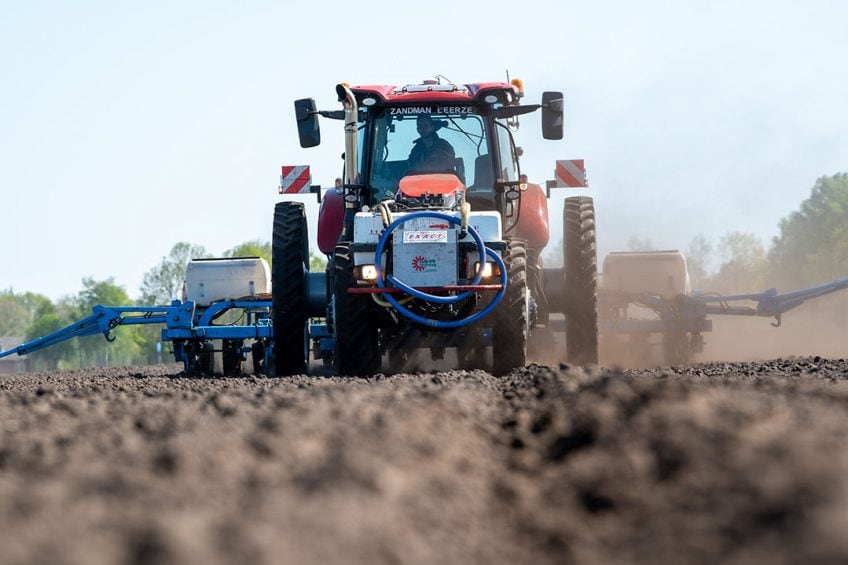Precision seeding for higher yields and less weeds

Higher yields and fewer weeds are possible if crops are sown in more uniform spatial patterns using precision seeding technology.
Higher yields and fewer weeds are possible if farmers sow wheat, maize, soy and other crops in more uniform spatial patterns. More precise sowing can also help reduce herbicide use and fertiliser runoff, according to research done by the University of Copenhagen.
“In the vast majority of cases, higher yields and fewer weeds are the result of sowing crops in a more uniform, grid-like pattern, where each plant is equidistant from its neighbouring plants, both within and between rows,” says Professor Jacob Weiner of the University of Copenhagen’s Department of Plant and Environmental Sciences.
Higher yields in 76% of trials
Professor Weiner and his colleagues from Northeast Agricultural University in China conducted a large metastudy of research in the area to discover the impact of uniform spatial patterns on crop yields and weed growth. The study, now published in the serial Advances in Agronomy, demonstrated that a uniform seeding pattern resulted in higher yields in 76% of trials, and fewer weeds in 73% of trials.
More than a 30% reduction in weeds
In particular, the researchers looked at three of the world’s most widely-cultivated crops: wheat, maize and soybean. In many studies, yields were roughly 20% higher, while one study yielded 60% more wheat and another, up to 90% more soybeans. With regards to weed growth, several studies resulted in more than a 30% reduction in weeds when traditional, less precise sowing was replaced by the uniform sowing pattern.
A typical seeding machine sows in a fairly precise distance between rows. However, within each row, the distance between seeds is random, meaning that some plants have close neighbours, while others have distant ones.
Conversely, when seeds are sown in uniform grid patterns, roots spread and occupy soil space faster, while more readily and efficiently absorbing nutrients. This helps to reduce the release of nutrients such as nitrogen.
Text continues underneath image
Less nitrogen runoff
“From an environmental perspective, it’s win-win. There is less nitrogen runoff, and herbicide can be reduced because there are fewer weeds to contend with. This ability to increase yields and mitigate environmental impacts contributes to more sustainable agriculture,” according to the the professor.
Above ground, the uniform grid pattern is advantageous because crop plants shade one another less during the early part of the growing season. One study estimateded that crop leaves covered the ground several weeks sooner when sown in a uniform sowing pattern.
Technically, this type of precision sowing has been a challenge. “But now, there are machines suited for the job and new ones are constantly being developed. This applies to both precision seeders and robots. You might pay more for the machine, but it’s a one-time expense that pays itself off,” says Jacob Weiner.



